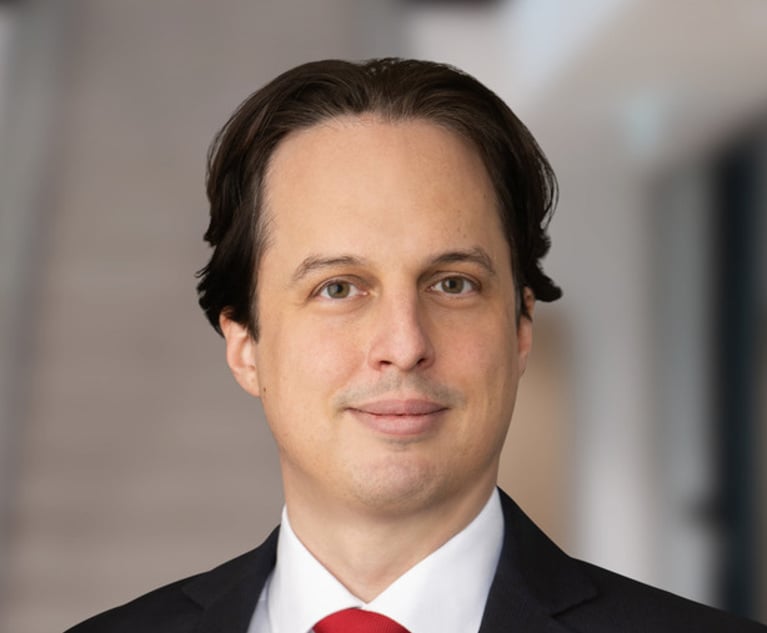Top pay means top performance
Management - C Randel Lewis and Joseph B Altonji say US firms are prepared to pay top dollar for top performers - as long as they prove their worth
February 03, 1999 at 07:03 PM
5 minute read
US law firms, having become accustomed to the 'free agent' market for the best and brightest lawyers controlling sizeable books of profitable business, have begun extending this market as they increase their European presence.
US firms are willing to pay top compensation for those lawyers who can give them their desired European base. While the goal for US firms is to gain an edge in this competitive market, compensation practices have implications for European-based firms as well.
To understand these practices, it is best to look at parallels in the corporate world. In the US, corporate leaders are more highly-compensated than their European counterparts, partly due to a fundamental difference in the perception of their role in, and importance to, a company.
The European view tends to be that corporate leaders are stewards guiding an organisation. The organisation is the primary repository of economic value. In the US, corporate leaders are viewed as having a unique value that they transfer to the company to generate or ensure its success.
US law firms hold a similar view of their top performers. Partner incomes are generated primarily through the personal efforts of the lawyers, including mainly the efforts of partners to generate and service a high-quality clientele.
For a limited number of the strongest firms, an element of firm-related goodwill may contribute to the profit generating capacity of the firm, but for most firms significant goodwill is attached to individual partners.
Partners are compensated, in part, for contributing their own goodwill to the enterprise. As such, they are entitled to a significant share of the profitability they help to create.
US law firms place economic value on various contributions partners make. The most important of these include:
l Developing and maintaining a substantial base of profitable business. The most highly-paid US law firm partners typically control client business of several million dollars, and sometimes as much as $10m or more.
l The work the individual partner carries out. Successful partners in major US firms work very hard, often generating receipts for their own efforts of $750,000 or more.
l The value of the reputation and expertise of the individual lawyer, which increases the prestige of the firm.
l Other contributions to the firm, such as leadership and management.
On top of this, firms may be willing to pay a premium to get the right lawyers to establish a competitive presence in key markets.
It is easy to see how partners whose contributions to the firm include, say, $5m in business and more than 2000 hours billed at top firm rates can command more than $1m in compensation packages.
While not formulaic in their approach to compensation, most US firms are quite prepared to tie partner compensation directly to economic performance. Add to this the high level of income generated by the strongest US firms, and it is easy see why these firms are offering significant European compensation packages. Finally, it is important to note that the philosophical underpinnings of US compensation systems lead inevitably to significant spreads in partner compensation.
Lockstep systems are rare (although they work well in a limited number of the strongest New York firms) and 'merit' is the driving force behind compensation. This leads to the conclusion that some partners should be paid substantially more than others.
Partner compensation spreads within most strong US law firms are in the range of 4-5:1. As a result, a firm with average partner compensation of only $500,000 is likely to have a number of partners paid in the $1m-$1.3m range.
Firms with higher average incomes – including many of the larger New York-based firms – will have a number of very highly compensated partners. It is hardly a stretch for these firms to compensate high-performing laterals at similar levels.
However, if a firm is paying 'above scale' to attract a lateral candidate, it will expect that partner's performance to quickly justify the compensation. Such justification might include objective performance well above other partners – or a rapid and credible entree to a new market.
Highly-compensated laterals present various management challenges for the acquiring firm. Consistent with the merit-based compensation philosophy, such lawyers must deliver, and do so quickly. While most laterals are an investment for the first year, there will be a clear expectation for payback the second.
Most firms will not long carry a highly-
compensated partner who is not living up to
expectations. Furthermore, integrating these high-performance partners into the firm is a critical and on-going challenge. The managing partner must be prepared to work diligently to achieve a smooth integration.
In spite of the challenges, successful US firms are built on successful individual partners. Those partners are rewarded handsomely for their contributions. As US law firms increase their presence in Europe, the compensation approaches that fostered their success are likely to follow.
C Randel Lewis and Joseph B Altonji are consultants at the international legal management consulting firm Hildebrandt Inc.
This content has been archived. It is available through our partners, LexisNexis® and Bloomberg Law.
To view this content, please continue to their sites.
Not a Lexis Subscriber?
Subscribe Now
Not a Bloomberg Law Subscriber?
Subscribe Now
NOT FOR REPRINT
© 2025 ALM Global, LLC, All Rights Reserved. Request academic re-use from www.copyright.com. All other uses, submit a request to [email protected]. For more information visit Asset & Logo Licensing.
You Might Like
View All

Kim & Chang, Freshfields, A&O Shearman Take Top Spots for Highest Collective Deal Value as APAC M&A Grew By Just 1% in 2024

Another Partner Exits Deloitte Legal—Former M&A Head Joins UK Top 50 Law Firm

KPMG Law US Targets Alternative Business Licence, Shaking Up Legal Status Quo
3 minute readTrending Stories
- 1TikTok Law and TikTok Politics
- 2California Supreme Court Vacates Murder Conviction in Infant Abuse Case
- 3New York’s Proposed Legislation Restraining Transfer of Real Property
- 4Withers Hires Lawyers, Staff From LA Trusts and Estates Boutique
- 5To Speed Criminal Discovery, NY Bill Proposes Police-to-Prosecutor Pipeline For Records
Who Got The Work
Michael G. Bongiorno, Andrew Scott Dulberg and Elizabeth E. Driscoll from Wilmer Cutler Pickering Hale and Dorr have stepped in to represent Symbotic Inc., an A.I.-enabled technology platform that focuses on increasing supply chain efficiency, and other defendants in a pending shareholder derivative lawsuit. The case, filed Oct. 2 in Massachusetts District Court by the Brown Law Firm on behalf of Stephen Austen, accuses certain officers and directors of misleading investors in regard to Symbotic's potential for margin growth by failing to disclose that the company was not equipped to timely deploy its systems or manage expenses through project delays. The case, assigned to U.S. District Judge Nathaniel M. Gorton, is 1:24-cv-12522, Austen v. Cohen et al.
Who Got The Work
Edmund Polubinski and Marie Killmond of Davis Polk & Wardwell have entered appearances for data platform software development company MongoDB and other defendants in a pending shareholder derivative lawsuit. The action, filed Oct. 7 in New York Southern District Court by the Brown Law Firm, accuses the company's directors and/or officers of falsely expressing confidence in the company’s restructuring of its sales incentive plan and downplaying the severity of decreases in its upfront commitments. The case is 1:24-cv-07594, Roy v. Ittycheria et al.
Who Got The Work
Amy O. Bruchs and Kurt F. Ellison of Michael Best & Friedrich have entered appearances for Epic Systems Corp. in a pending employment discrimination lawsuit. The suit was filed Sept. 7 in Wisconsin Western District Court by Levine Eisberner LLC and Siri & Glimstad on behalf of a project manager who claims that he was wrongfully terminated after applying for a religious exemption to the defendant's COVID-19 vaccine mandate. The case, assigned to U.S. Magistrate Judge Anita Marie Boor, is 3:24-cv-00630, Secker, Nathan v. Epic Systems Corporation.
Who Got The Work
David X. Sullivan, Thomas J. Finn and Gregory A. Hall from McCarter & English have entered appearances for Sunrun Installation Services in a pending civil rights lawsuit. The complaint was filed Sept. 4 in Connecticut District Court by attorney Robert M. Berke on behalf of former employee George Edward Steins, who was arrested and charged with employing an unregistered home improvement salesperson. The complaint alleges that had Sunrun informed the Connecticut Department of Consumer Protection that the plaintiff's employment had ended in 2017 and that he no longer held Sunrun's home improvement contractor license, he would not have been hit with charges, which were dismissed in May 2024. The case, assigned to U.S. District Judge Jeffrey A. Meyer, is 3:24-cv-01423, Steins v. Sunrun, Inc. et al.
Who Got The Work
Greenberg Traurig shareholder Joshua L. Raskin has entered an appearance for boohoo.com UK Ltd. in a pending patent infringement lawsuit. The suit, filed Sept. 3 in Texas Eastern District Court by Rozier Hardt McDonough on behalf of Alto Dynamics, asserts five patents related to an online shopping platform. The case, assigned to U.S. District Judge Rodney Gilstrap, is 2:24-cv-00719, Alto Dynamics, LLC v. boohoo.com UK Limited.
Featured Firms
Law Offices of Gary Martin Hays & Associates, P.C.
(470) 294-1674
Law Offices of Mark E. Salomone
(857) 444-6468
Smith & Hassler
(713) 739-1250






